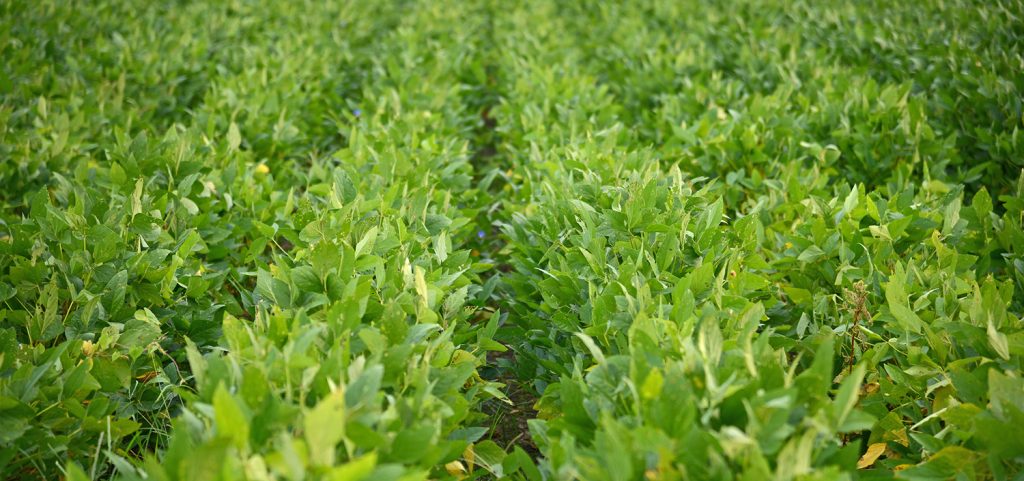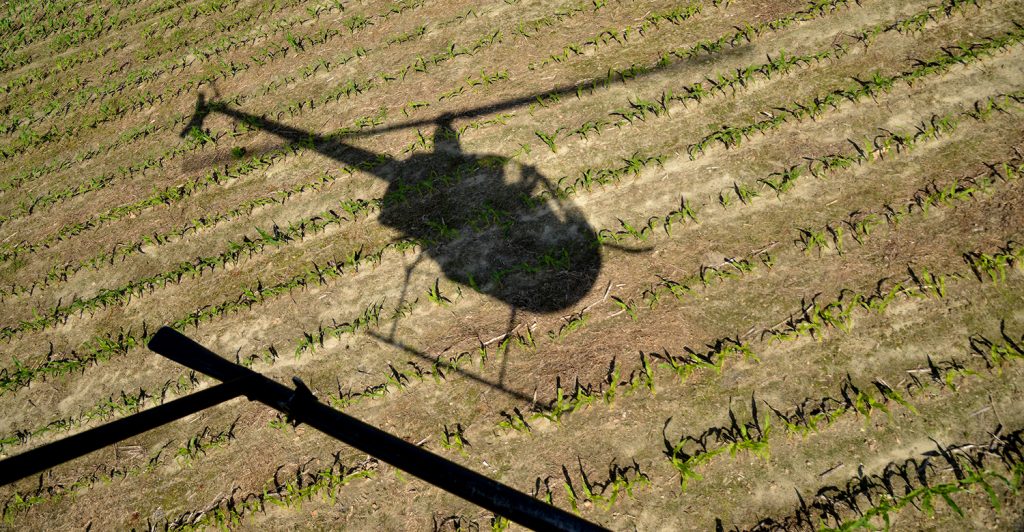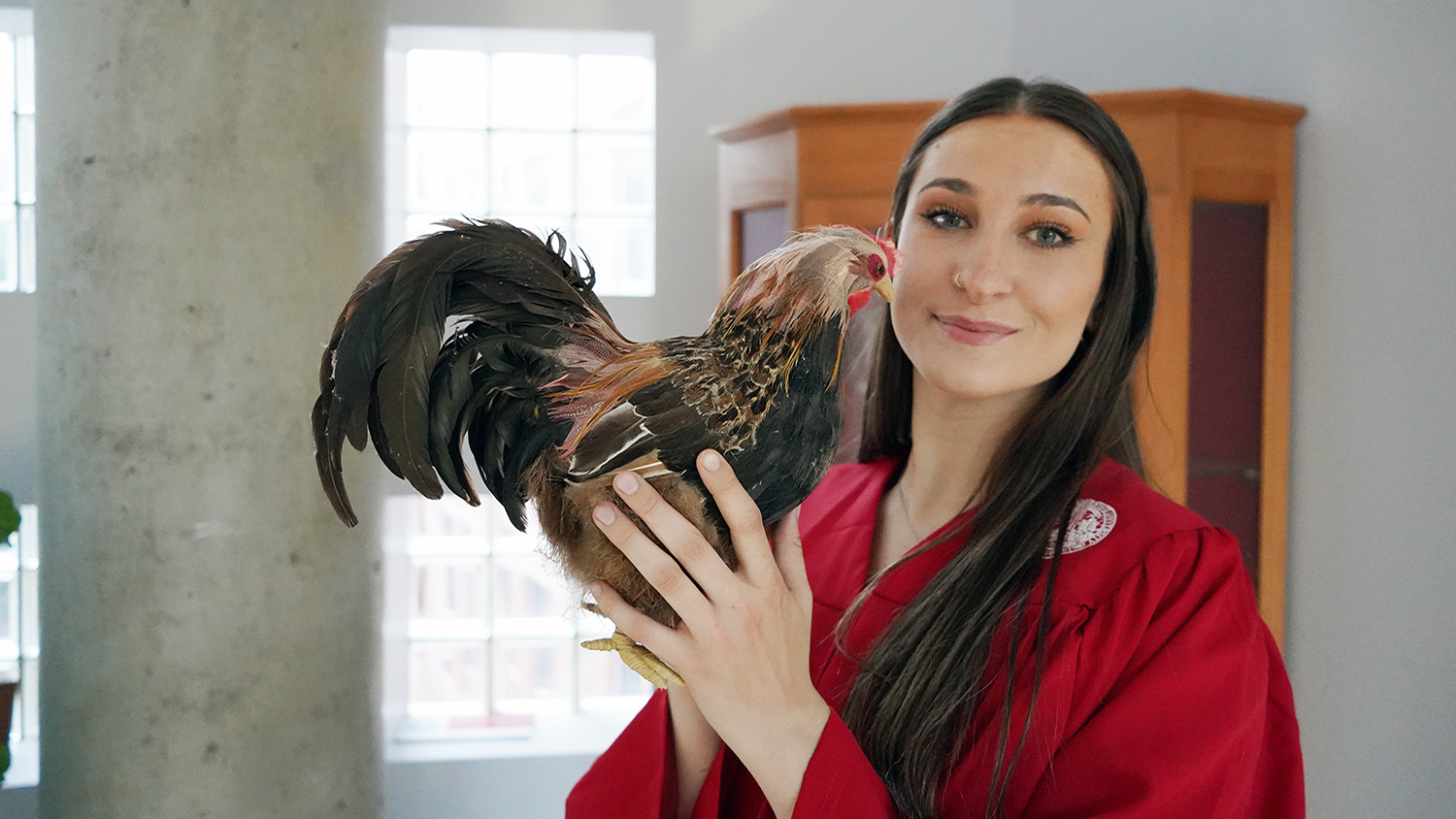Interpreting the Growing Field of On-Farm Data

Editor’s Note: This post was written by Jennifer Howard, communications specialist in NC State’s Department of Crop & Soil Sciences.
The pursuit of increasingly efficient agricultural practices has led to a new wave of technological innovations. Specifically, the field of precision agriculture is focused on capturing farm data and using it to benefit global food production and environmental security.
The resulting mountain of raw data constitutes both a challenge and an opportunity for smart farming. But to what end?
NC State researchers recently completed a study illustrating the dilemma farmers face when evaluating whether a high tech investment will reap reliable farm results.
Making Data Make Sense
Over 90% of consumer (and farm) data captured is location-based. Never before have growers had so much information at their fingertips. From sensors embedded in farm machinery to satellites images, data is flowing everywhere. It is estimated that by 2025 an average-sized farm will produce more than one million data points a day. But the raw data is often irrelevant to many growers.
Successfully integrating ag technology onto NC farms requires melding data streams with basic agronomics to improve on-ground management. And distilling silos of ag data into meaningful kernels can prove tougher than collecting the data itself.
Yield Monitoring
One precision technology accruing agricultural data is yield monitors. These combine-mounted systems record grain throughput based on GPS field location. Farmers can see in real-time the varying harvest rate of a crop during each pass. Later, farmers or consultants can visually map the data to assess the full season’s gross production.
Yield maps layered with additional environmental data can help isolate site-specific anomalies hindering crop yield and identify field areas for farmers to scout. Including other data sets, such as field elevation/drainage, soil texture, and seeding rate helps expose relationships between field conditions and yield.
“It is important to put numbers behind our assumptions, not just rely on our gut or a qualitative assessment,” NC State GIS Research and Extension Specialist Rob Austin said. Therein lies the lure of precision ag technology. “Being able to identify, characterize, and quantify the effects of the environmental factors impacting yield is both the challenge and opportunity in more efficient land management.”
But current technology generates raw data akin to unplanted seed – untapped potential that requires action to deliver the goods. While widely used on vast midwestern grain farms, yield monitors are somewhat less common on NC’s smaller, fractured fields. High tech tools like yield monitors may seem a technological layup for large-scale grain farmers but studies show that farm technologies are not “one size fits all.”

Applying Data Analytics in NC
In a recently published 5-year study, Deanna Osmond, NC State Crop & Soil Sciences’ Extension Leader, and Austin analyzed yield monitor data to assess the agronomic value of nitrogen rates on corn and wheat. The study, supported by the NC Environmental Defense Fund, selected a farmer network of 100 coastal plain growers to participate in this on-farm trial. The investigation compared growers’ current nitrogen use with a +25% increase and -25% nitrogen decrease for any change in yield.
Traditionally, most field research is conducted at controlled research stations. One of the first North Carolina-based nitrogen investigations of this size, this study provided growers with a learning opportunity to evaluate yield monitor technology on their own land.
Confirmed Results
The statistical results confirmed the current NC Extension recommendations for corn and wheat nitrogen application rates (as provided by the NC Realistic Yield Expectation (RYE) database). Overall, wheat growers proved quite accurate in their nitrogen use for optimum yield. Study results did indicate some cases where corn farmers could reduce nitrogen fertilization with no statistically significant yield loss. But those results didn’t always trigger a change in farmers’ actions – the numbers alone weren’t convincing.
The Need for Interpreters
The project’s real takeaway was the logistical challenge of accurately capturing and analyzing farm-sourced data. “The time required to calibrate the equipment and clean the resulting data [in our study] was significant,” Osmond noted. “But it was necessary. Just collecting data isn’t enough – it can be misleading. You’ve got to have a sound background in research and analysis. [Gathering meaningful results] really comes down to data quality.”
The push for growers to adopt technology as “the future of farming” leaves many farmers caught between a promising investment and an expensive numerical fog. Farmers can benefit from ag data when presented with actionable information but most haven’t the time to onboard and analyze the barrage of detail.
Developers are working to assimilate the multitude of data platforms – “teaching” them to comfortably shake hands and render useful dashboards. But a polished dashboard doesn’t invoke change. Osmond and Austin’s study showed that human decisions do.
Forthcoming protocols and algorithms will help farmers distill big data into actionable events. But the technology’s current reporting (without agronomic interpretation) isn’t meaningful to most growers. Data analysis isn’t something most have the time or training to navigate. An interpreter is needed to translate the rendered data into confident action. So who is equipped to fill the void? Researchers, Extension professionals, and crop consultants are logical sources for the job.

Extending the Knowledge Base
NC State Extension is uniquely positioned to provide this new level of agricultural data guidance to farmers. Technology is expensive and always evolving. “One of Extension’s roles is to help identify the technologies and tools that have the greatest benefit and potential for use on the farm. We will absorb the risk to prove a technology, then share what works with our growers,” Austin said.
Sharing best practices and emerging technology applications that benefit NC growers, breeders, and environmental managers is a priority. Rob Austin is a frequent presenter at Cooperative Extension field days and workshops. Two upcoming presentations include the “Uses & Legal Issues of Unmanned Aerial Vehicles” for sediment and erosion control and on-site septic applications and a talk at the 2020 Mid-Atlantic Soil Testing and Plant Analysis Work Group on the current state of drone use in agriculture.
Data’s Invitation
Technology alone isn’t the superhero. Austin reminds us that it is only a tool. “Technology gives us the data to identify and characterize variability in our agricultural operations, but more is needed … The technology provides us with about 80% of a solution, but the remaining 20% comes from data analytics and interpretation,” he said. “That crucial 20% depends on a solid foundation in agronomic decision-making and data science. Data invites us to make better decisions – but doesn’t remove the importance of agronomic and scientific understanding.” Precision agriculture is producing a literal “data field,” one requiring a new breed of agriculturalist – schooled in agronomy yet open to new ideas, skills, and experiences.
Teaching Technology
Austin’s class, “Special Topics in Precision Agriculture” (CSSC 495), is in its second year. “We cover the fundamental technologies in precision agriculture with a focus on the software and data used to make data-driven decisions. This includes understanding and managing spatial variability, fundamentals of Geographic Information Systems (GIS) and Farm Information Management Systems (FIMS), GPS, and an introduction to imagery and remote sensing. In the last part of the course, students get a hands-on chance to fly one of our research drones and analyze the imagery,” he added.
This upper-level undergraduate course is available to all students but is especially attractive to those with an interest in agricultural technology with some basic agronomic background. “NC State’s ag students need to be able to ‘talk-the talk’, but also ‘walk-the-walk’ when it comes to using precision agriculture and understanding its applications. They need to be able to both ‘Think and Do’ when it comes to making data-driven decisions,” Austin said.
The demand for his class bears witness to its utility – class registration has increased and is gaining momentum. “Students with the experience and skills taught in class can work anywhere from traditional crop protection or crop consulting services, offering site-specific soil sampling and prescription nutrient recommendations, to many of the newly developing businesses focused on agronomic data services – where agronomic data is collected, managed, and analyzed for farm use. It’s an extremely valuable skill set for graduates and is quickly becoming an expectation for new hires in the field,” Austin said.
Interested in Learning More?
Research developments advance constantly. Keep abreast of the latest news from the Department of Crop & Soil Sciences by joining our “Friends of Crop & Soil Sciences” weekly newsletter. If you are a student interested in precision agriculture (or know someone who is), learn about our multiple degree programs or sign up for an email exploration of our department’s undergraduate studies.
This post was originally published in NC State News.


